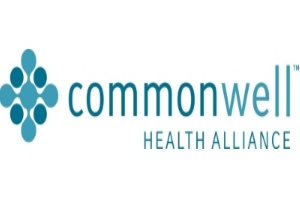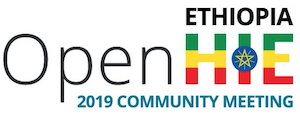 Audacious Inquiry (Ai), an industry leader in connected care, and The Sequoia Project, Inc a non-profit dedicated to solving health IT interoperability for the public good, announced a teaming agreement to support the PULSE initiative and to leverage their combined expertise in support of displaced populations needing medical treatment and ongoing care as part of disaster response efforts. Ai first developed the PULSE concept under contract with the Office of the National Coordinator for Health IT (ONC) in April 2014. In March 2016, the California Emergency Management Services Authority (CalEMSA) contracted with Ai to develop and operate PULSE. PULSE was subsequently activated for use during the California wildfires in October 2017, with the support of The Sequoia Project. The non-profit works to advance the breadth of PULSE by leveraging national networks and by convening a national advisory council of experts.
Audacious Inquiry (Ai), an industry leader in connected care, and The Sequoia Project, Inc a non-profit dedicated to solving health IT interoperability for the public good, announced a teaming agreement to support the PULSE initiative and to leverage their combined expertise in support of displaced populations needing medical treatment and ongoing care as part of disaster response efforts. Ai first developed the PULSE concept under contract with the Office of the National Coordinator for Health IT (ONC) in April 2014. In March 2016, the California Emergency Management Services Authority (CalEMSA) contracted with Ai to develop and operate PULSE. PULSE was subsequently activated for use during the California wildfires in October 2017, with the support of The Sequoia Project. The non-profit works to advance the breadth of PULSE by leveraging national networks and by convening a national advisory council of experts.
health information exchange
See the following -
A 40-Year 'Conspiracy' at the VA
 Four decades ago, in 1977, a conspiracy began bubbling up from the basements of the vast network of hospitals belonging to the Veterans Administration. Across the country, software geeks and doctors were puzzling out how they could make medical care better with these new devices called personal computers. Working sometimes at night or in their spare time, they started to cobble together a system that helped doctors organize their prescriptions, their CAT scans and patient notes, and to share their experiences electronically to help improve care for veterans...
Four decades ago, in 1977, a conspiracy began bubbling up from the basements of the vast network of hospitals belonging to the Veterans Administration. Across the country, software geeks and doctors were puzzling out how they could make medical care better with these new devices called personal computers. Working sometimes at night or in their spare time, they started to cobble together a system that helped doctors organize their prescriptions, their CAT scans and patient notes, and to share their experiences electronically to help improve care for veterans...
- Login to post comments
athenahealth’s CEO Jonathan Bush to Headline HIMSS16 Views from the Top With Dr. John Halamka
 athenahealth, Inc....today announced that Jonathan Bush, athenahealth CEO, and Dr. John Halamka, Beth Israel Deaconess Medical Center (BIDMC) CIO, will headline a Views from the Top session on the benefits of a future-proof, interoperable network at the 2016 HIMSS Annual Conference and Exhibition (HIMSS16), taking place February 29 - March 4 in Las Vegas. During the session, “How Future-Proof HIT Infrastructure Supports Data Sharing,” Bush and Halamka will observe the interoperability landscape, exploring challenges and benefits of health information exchange, as well as identifying opportunities and imperatives for providers to participate amidst the industry shift to accountable care.
athenahealth, Inc....today announced that Jonathan Bush, athenahealth CEO, and Dr. John Halamka, Beth Israel Deaconess Medical Center (BIDMC) CIO, will headline a Views from the Top session on the benefits of a future-proof, interoperable network at the 2016 HIMSS Annual Conference and Exhibition (HIMSS16), taking place February 29 - March 4 in Las Vegas. During the session, “How Future-Proof HIT Infrastructure Supports Data Sharing,” Bush and Halamka will observe the interoperability landscape, exploring challenges and benefits of health information exchange, as well as identifying opportunities and imperatives for providers to participate amidst the industry shift to accountable care.
- Login to post comments
Audacious Inquiry and The Sequoia Project Announce National Partnership to Support States in Disaster Response Through the Patient Unified Lookup System for Emergencies (PULSE)
- Login to post comments
Australia's Digital Health Strategy Gets the Nod Without Data Interoperability Controls
My Health Record, the Australian government's e-health record system, has been officially given the green light from the Council of Australian Governments Health Council to automatically sign citizens up to the service, allowing them to opt-out if they choose. By 2018, all Australians will have a My Health Record and by 2022, all healthcare providers will be able to contribute to and use health information in My Health Record on behalf of their patients. They will also be able to communicate with other healthcare providers on the clinical status of joint patients via the digital platform...
- Login to post comments
Can Open Source EHRs Offer a New Path for Health IT Usability?
 In an article published in JMIR Medical Informatics, researchers from the University of California-Davis decided to explore the small but intriguing world of open source EHRs, which may fit very neatly into the growing interest in application programming interfaces, FHIR, and other open data standards that encourage customized mix-and-match health IT development without the historical pitfalls of proprietary systems. Using data from 2014, the researchers identified 54 open source projects that met the HHS definition of an electronic health record. At the time, four of those packages had achieved Certified EHR Technology status from the ONC.
In an article published in JMIR Medical Informatics, researchers from the University of California-Davis decided to explore the small but intriguing world of open source EHRs, which may fit very neatly into the growing interest in application programming interfaces, FHIR, and other open data standards that encourage customized mix-and-match health IT development without the historical pitfalls of proprietary systems. Using data from 2014, the researchers identified 54 open source projects that met the HHS definition of an electronic health record. At the time, four of those packages had achieved Certified EHR Technology status from the ONC.
- Login to post comments
careMESH Launches New Referral Management Module with Guaranteed Digital Delivery to Any U.S. Clinician
 careMESH, the only service provider that guarantees 100% digital delivery of protected health information to any clinician nationwide, announced that it has expanded its secure communications capabilities to include a comprehensive referral management module. The built-in workflow tools and convenient administrative Task Manager make it easy for users to create a referral, attach a patient record and other relevant care information, and send it digitally to any other healthcare provider in the country. careMESH customers, including hospitals, large physician groups, Federally Qualified Health Centers (FQHCs) and others, use careMESH to send structured medical records, discharge summaries, secure messages, and other sensitive clinical information.
careMESH, the only service provider that guarantees 100% digital delivery of protected health information to any clinician nationwide, announced that it has expanded its secure communications capabilities to include a comprehensive referral management module. The built-in workflow tools and convenient administrative Task Manager make it easy for users to create a referral, attach a patient record and other relevant care information, and send it digitally to any other healthcare provider in the country. careMESH customers, including hospitals, large physician groups, Federally Qualified Health Centers (FQHCs) and others, use careMESH to send structured medical records, discharge summaries, secure messages, and other sensitive clinical information.
- Login to post comments
careMESH to Participate in the CMS Electronic Medical Documentation Interoperability Program
 careMESH®, the only service provider that guarantees 100% digital delivery of referrals and care transitions to any healthcare organization nationwide, announced today that it has joined the Electronic Medical Documentation Interoperability (EMDI) program of the Centers for Medicare and Medicaid Services (CMS)...Under the program, careMESH will partner with a hospital to leverage its existing Electronic Health Record (EHR) system to deliver digital referrals and care transitions to post-acute healthcare providers. Receiving clinicians will be able to reply to the sender, save patient records to their own EHR, and close referral loops through automated workflow tools. This allows both the hospital and the receiving providers they interact with to...
careMESH®, the only service provider that guarantees 100% digital delivery of referrals and care transitions to any healthcare organization nationwide, announced today that it has joined the Electronic Medical Documentation Interoperability (EMDI) program of the Centers for Medicare and Medicaid Services (CMS)...Under the program, careMESH will partner with a hospital to leverage its existing Electronic Health Record (EHR) system to deliver digital referrals and care transitions to post-acute healthcare providers. Receiving clinicians will be able to reply to the sender, save patient records to their own EHR, and close referral loops through automated workflow tools. This allows both the hospital and the receiving providers they interact with to...
- Login to post comments
Carequality and CommonWell Health Alliance Agree on Connectivity and Collaboration to Advance Interoperability
 CommonWell Health Alliance and Carequality announced today an agreement to increase health IT connectivity nationwide. The agreement provides additional health data sharing options to a broad range of stakeholders across healthcare, and has three aspects:
CommonWell Health Alliance and Carequality announced today an agreement to increase health IT connectivity nationwide. The agreement provides additional health data sharing options to a broad range of stakeholders across healthcare, and has three aspects:
- Login to post comments
DSS Inc Introduces Secure Direct Messaging to Improve Care Delivery for Hospitals and Health Systems
 Document Storage Systems, Inc. (DSS), a leading provider of health information technology (HIT) solutions for federal, private and public healthcare organizations, today announced the availability of a Direct Messaging system that allows payers, providers and health systems to securely share information, replacing time consuming manual processes, reducing overhead costs and enhancing patient engagement. These new capabilities are integrated with DSS’ EHR system, vxVistA, through the Access My Records (AMR) Portal Suite...
Document Storage Systems, Inc. (DSS), a leading provider of health information technology (HIT) solutions for federal, private and public healthcare organizations, today announced the availability of a Direct Messaging system that allows payers, providers and health systems to securely share information, replacing time consuming manual processes, reducing overhead costs and enhancing patient engagement. These new capabilities are integrated with DSS’ EHR system, vxVistA, through the Access My Records (AMR) Portal Suite...
- Login to post comments
Electronic Health Records: a “Quadruple Win,” a “Quadruple Failure,” or Simply Time for a Reboot?
 Just a decade ago, when paper charts were commonplace in the USA, it seemed that electronic health records (EHRs) were destined to transform the quality and efficiency of healthcare delivery, as well as the care experience for patients and clinicians...The reality over the ensuring years has, to put it mildly, not met expectations. According to a 2014 analysis led by the Office of the National Coordinator for Health Information,2 over 80% of US doctors now use EHRs. Yet, many of the predictions about the benefits of EHRs have yet to materialize to the extent predicted. ..Noteworthy concerns include egregious medical errors resulting from design glitches3, charting templates filled extensively with meaningless boilerplate, the common practice of pasting old notes4 that makes it difficult to know which documentation is “real,” “alert fatigue”5 due to excessive EHR warnings, and even reduced communication among clinical team members.6
Just a decade ago, when paper charts were commonplace in the USA, it seemed that electronic health records (EHRs) were destined to transform the quality and efficiency of healthcare delivery, as well as the care experience for patients and clinicians...The reality over the ensuring years has, to put it mildly, not met expectations. According to a 2014 analysis led by the Office of the National Coordinator for Health Information,2 over 80% of US doctors now use EHRs. Yet, many of the predictions about the benefits of EHRs have yet to materialize to the extent predicted. ..Noteworthy concerns include egregious medical errors resulting from design glitches3, charting templates filled extensively with meaningless boilerplate, the common practice of pasting old notes4 that makes it difficult to know which documentation is “real,” “alert fatigue”5 due to excessive EHR warnings, and even reduced communication among clinical team members.6
- Login to post comments
Global OpenHIE Community to Hold 2019 Conference in Ethiopia
 The OpenHIE community will hold its second annual community meeting November 4-8, 2019 in Addis Ababa, Ethiopia. Between 200 and 300 individuals are expected to attend with the ultimate goal of development and efficient and effective operation of national and regional health information exchanges. OpenHIE, short for Open Health Information Exchange, is a global, mission-driven collective dedicated to improving the health of the underserved through open, collaborative development of implementation tools and to supporting country-driven, large-scale health information exchange. Read More »
The OpenHIE community will hold its second annual community meeting November 4-8, 2019 in Addis Ababa, Ethiopia. Between 200 and 300 individuals are expected to attend with the ultimate goal of development and efficient and effective operation of national and regional health information exchanges. OpenHIE, short for Open Health Information Exchange, is a global, mission-driven collective dedicated to improving the health of the underserved through open, collaborative development of implementation tools and to supporting country-driven, large-scale health information exchange. Read More »
- Login to post comments
Halamaka Takes a Deep Dive on the MACRA NPRM
 As promised last week, I’ve read and taken detailed notes on the entire 962 page MACRA notice of proposed rulemaking (NPRM) so that you will not have to. Although this post is long, it is better than the 20 hours of reading I had to do! Here is everything you need to know from an IT perspective about the MACRA NPRM...What is the MACRA NPRM trying to achieve with regard to healthcare IT? The MACRA NPRM proposes to consolidate components of three existing programs, the Physician Quality Reporting System (PQRS), the Physician Value-based Payment Modifier (VM), and the Medicare Electronic Health Record (EHR) Incentive Program for eligible professionals (EPs), creating a single set of reporting requirements. The rule would sunset payment adjustments under the current PQRS, VM, and the Medicare EHR Incentive Program for eligible professionals...
As promised last week, I’ve read and taken detailed notes on the entire 962 page MACRA notice of proposed rulemaking (NPRM) so that you will not have to. Although this post is long, it is better than the 20 hours of reading I had to do! Here is everything you need to know from an IT perspective about the MACRA NPRM...What is the MACRA NPRM trying to achieve with regard to healthcare IT? The MACRA NPRM proposes to consolidate components of three existing programs, the Physician Quality Reporting System (PQRS), the Physician Value-based Payment Modifier (VM), and the Medicare Electronic Health Record (EHR) Incentive Program for eligible professionals (EPs), creating a single set of reporting requirements. The rule would sunset payment adjustments under the current PQRS, VM, and the Medicare EHR Incentive Program for eligible professionals...
- Login to post comments
Halamka Discusses Three Disruptive Care Coordination Innovations In Use at Beth Israel
 Would you buy an iPhone if the only apps that ran on it were written by Apple? Maybe, but the functionality would not be very diverse. The same can be said of EHRs. Athena, Cerner, Epic, Meditech, and self developed EHRs such as BIDMC’s webOMR are purpose-built transaction engines for capturing data. However, it is impossible for any single vendor to provide all the innovation required by the marketplace to support new models of care I’m a strong believer in the concept of third party modules that layer on top of traditional EHRs in the same way that apps run in the iPhone ecosystem...
Would you buy an iPhone if the only apps that ran on it were written by Apple? Maybe, but the functionality would not be very diverse. The same can be said of EHRs. Athena, Cerner, Epic, Meditech, and self developed EHRs such as BIDMC’s webOMR are purpose-built transaction engines for capturing data. However, it is impossible for any single vendor to provide all the innovation required by the marketplace to support new models of care I’m a strong believer in the concept of third party modules that layer on top of traditional EHRs in the same way that apps run in the iPhone ecosystem...
- Login to post comments
Halamka on MU3 Regs: The Good, The Bad, and the Ugly
 On Friday March 20, CMS released the Electronic Health Record Incentive Program-Stage 3 and ONC released the 2015 Edition Health Information Technology (Health IT) Certification Criteria, 2015 Edition Base Electronic Health Record (EHR) Definition, and ONC Health IT Certification Program Modifications. Perhaps the most important statement in the entire 700+ pages is the following from the CMS rule: "Stage 3 of meaningful use is expected to be the final stage and would incorporate portions of the prior stages into its requirements."
On Friday March 20, CMS released the Electronic Health Record Incentive Program-Stage 3 and ONC released the 2015 Edition Health Information Technology (Health IT) Certification Criteria, 2015 Edition Base Electronic Health Record (EHR) Definition, and ONC Health IT Certification Program Modifications. Perhaps the most important statement in the entire 700+ pages is the following from the CMS rule: "Stage 3 of meaningful use is expected to be the final stage and would incorporate portions of the prior stages into its requirements."
- Login to post comments
Halamka Summarizes the CMS Meaningful Use Final Rule
 I’ve been asked to summarize the 752 page CMS Meaningful Use Final Rule...Between the Notice of Proposed Rulemaking and the publication of the CMS Final Rule, the Medicare Access and CHIP Reauthorization Act of 2015 (MACRA) passed to include sunsetting the Meaningful Use payment adjustment for professionals at the end of 2018. Also, MACRA requires the establishment of a Merit-Based Incentive Payment System (MIPS) which would incorporate Meaningful Use. The comment period will be used in an attempt to align the Meaningful Use program and the MIPS program...Stage 3 is more controversial and I will focus on that.
I’ve been asked to summarize the 752 page CMS Meaningful Use Final Rule...Between the Notice of Proposed Rulemaking and the publication of the CMS Final Rule, the Medicare Access and CHIP Reauthorization Act of 2015 (MACRA) passed to include sunsetting the Meaningful Use payment adjustment for professionals at the end of 2018. Also, MACRA requires the establishment of a Merit-Based Incentive Payment System (MIPS) which would incorporate Meaningful Use. The comment period will be used in an attempt to align the Meaningful Use program and the MIPS program...Stage 3 is more controversial and I will focus on that.
- Login to post comments